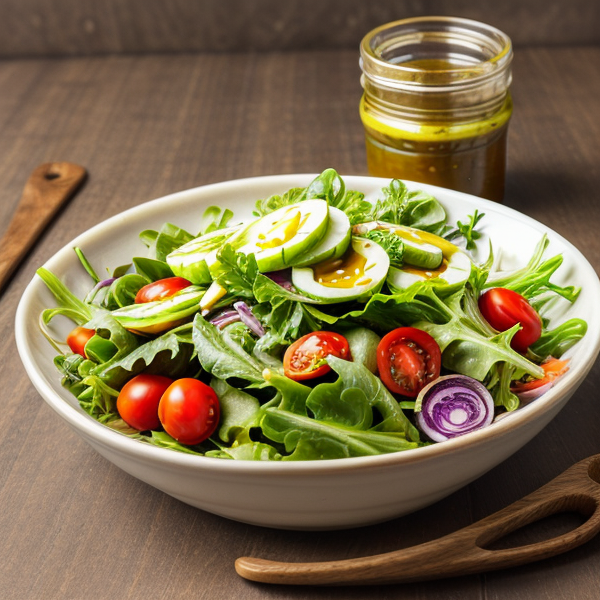Perfecting Vegan Salad Dressings and Vinaigrettes

In this article, we’ll explore some tips and tricks for creating delicious vegan salad dressings and vinaigrettes that are both healthy and flavorful. Whether you’re looking to make your own creamy Caesar dressing or simply want to add some zest to your greens, these recipes and techniques will help you perfect your vegan salad game.
Tip #1: Start with a base of oil and vinegar
Just like traditional salad dressings, vegan versions also start with a base of oil and vinegar. You can use any type of oil you prefer, such as olive oil, avocado oil, or even walnut oil. For a more intense flavor, try infusing your oil with fresh herbs like basil, thyme, or rosemary before using it in your dressing. As for the vinegar, apple cider vinegar is a popular choice among vegans due to its mild taste and numerous health benefits. However, you can also experiment with white wine vinegar, balsamic vinegar, or even rice vinegar to achieve different flavors.
Tip #2: Add acidity with fruit juices and citrus
Vinegar alone may not provide enough acidity to balance out the sweetness of your vegetables and fruits. To create a well-balanced dressing, consider adding some fruit juice or citrus juice to the mix. Lemon and lime juice are great options for their bright, tangy flavor. You can also use orange, grapefruit, or pomegranate juice for a unique twist. Just be sure to adjust the amount of acidity according to your preference and the desired flavor profile of your dish.
Tip #3: Use nuts and seeds for creaminess and texture
One of the challenges of making vegan salad dressings is achieving a creamy consistency without dairy. Fortunately, there are plenty of plant-based alternatives that can provide richness and body to your dressings. Nuts and seeds are excellent sources of healthy fats and protein, which can help thicken up your dressing while also adding flavor. Try blending together ingredients like tahini, cashews, almonds, sunflower seeds, or pumpkin seeds to create a smooth and creamy base for your dressing. You can also use nut butters, such as peanut butter or almond butter, for an added boost of flavor and texture.
Tip #4: Spice things up with herbs and spices
Herbs and spices are essential components of any salad dressing, vegan or otherwise. They not only add flavor but also enhance the overall presentation of your dish. Some common herbs used in vegan salad dressings include basil, mint, parsley, cilantro, dill, and tarragon. When it comes to spices, the possibilities are endless. Consider incorporating garlic, onion powder, paprika, chili flakes, curry powder, or even cumin for a unique twist. Experiment with different combinations to find the perfect balance of flavors for your taste buds.
Tip #5: Embrace umami with mushrooms and soy sauce
Umami is one of the five basic tastes, often described as savory or meaty. While many vegan salad dressings rely heavily on other flavors, incorporating umami can help create a more balanced and satisfying taste experience. Mushrooms are a great source of umami, and they pair perfectly with soy sauce. Simply sauté some mushrooms in a little bit of oil until they release their liquid, then let them cool before adding them to your dressing. You can also use other umami-rich ingredients like miso paste, tamari, or nutritional yeast to achieve a similar effect.
Bonus Tip: Make your own seasonings and condiments
Many store-bought salad dressings contain hidden animal products or preservatives. By making your own seasonings and condiments, you can ensure that your vegan salad dressings are not only delicious but also free from unwanted additives. Consider making your own Caesar dressing by infusing oil with garlic, anchovy fillets (substitute with 1 tablespoon of Worcestershire sauce), and Dijon mustard. Then, whisk in lemon juice, white wine vinegar, and a touch of maple syrup for sweetness. Finish off with some salt and pepper, and voila! A homemade, vegan Caesar dressing that’s better than anything you could buy at the store.
With these tips and tricks, you’ll never run out of ideas for creating delicious vegan salad dressings and vinaigrettes. So go ahead, experiment with different flavors and textures, and discover the joy of making your own salads at home. Bon appétit!
